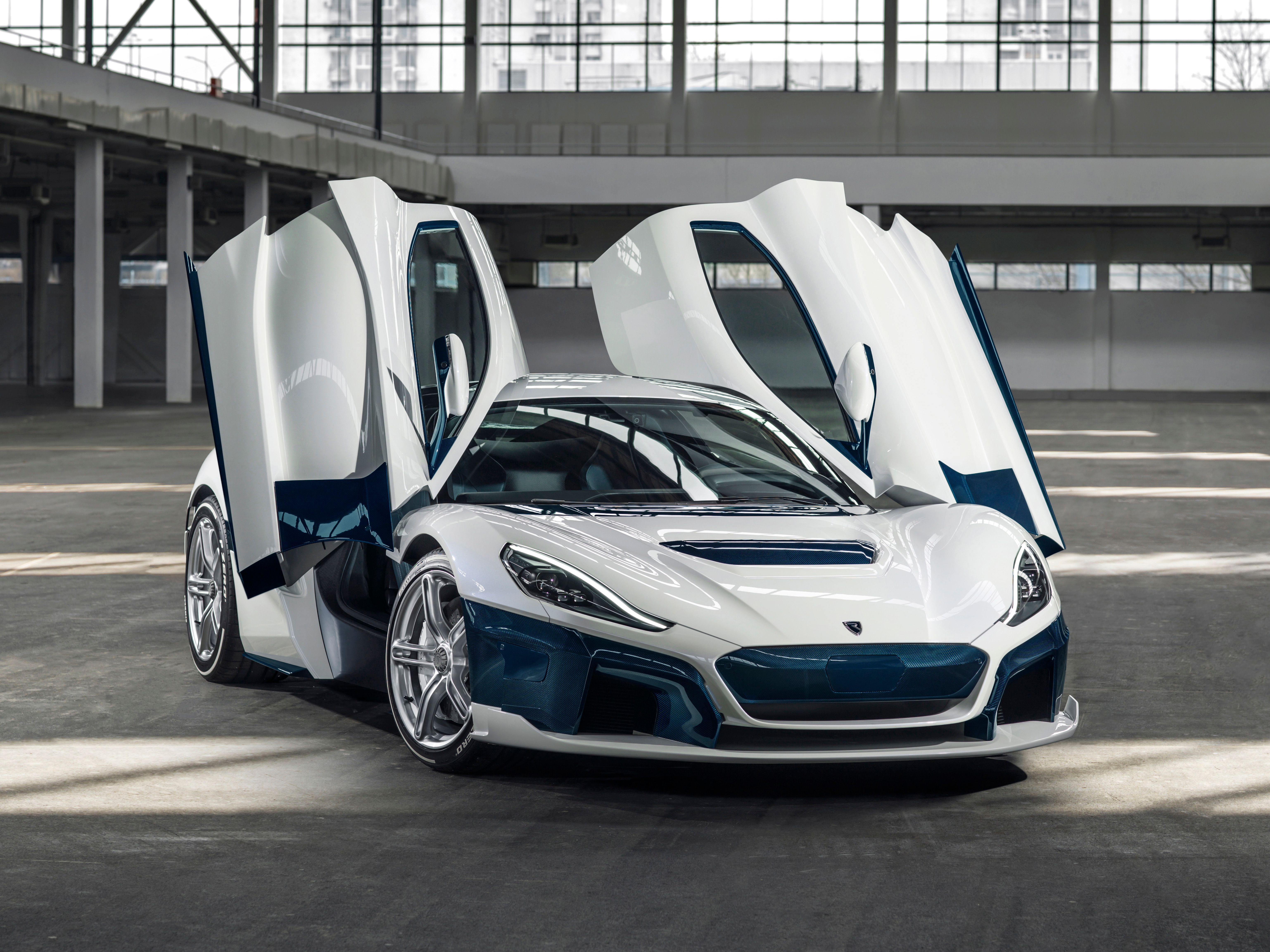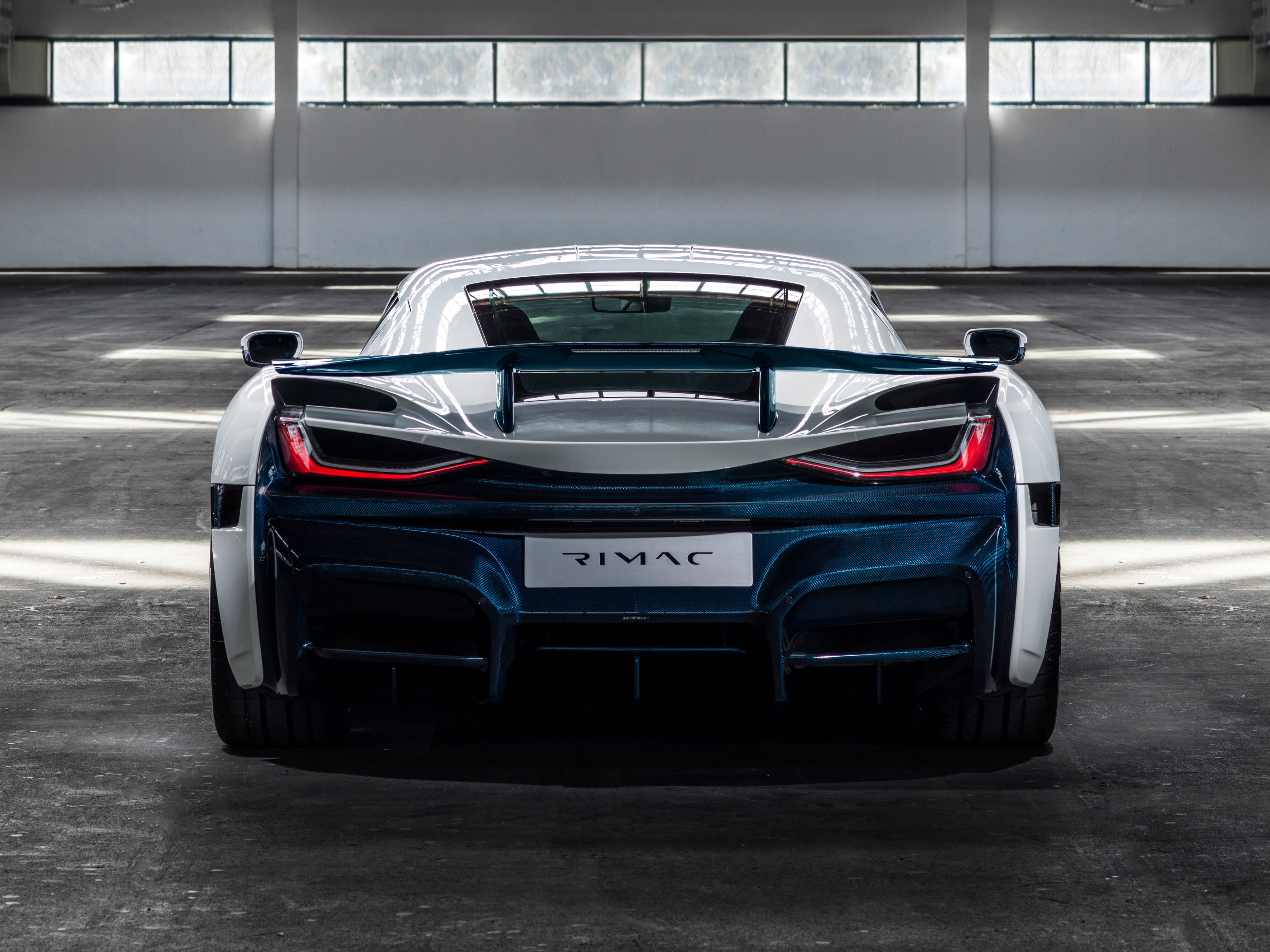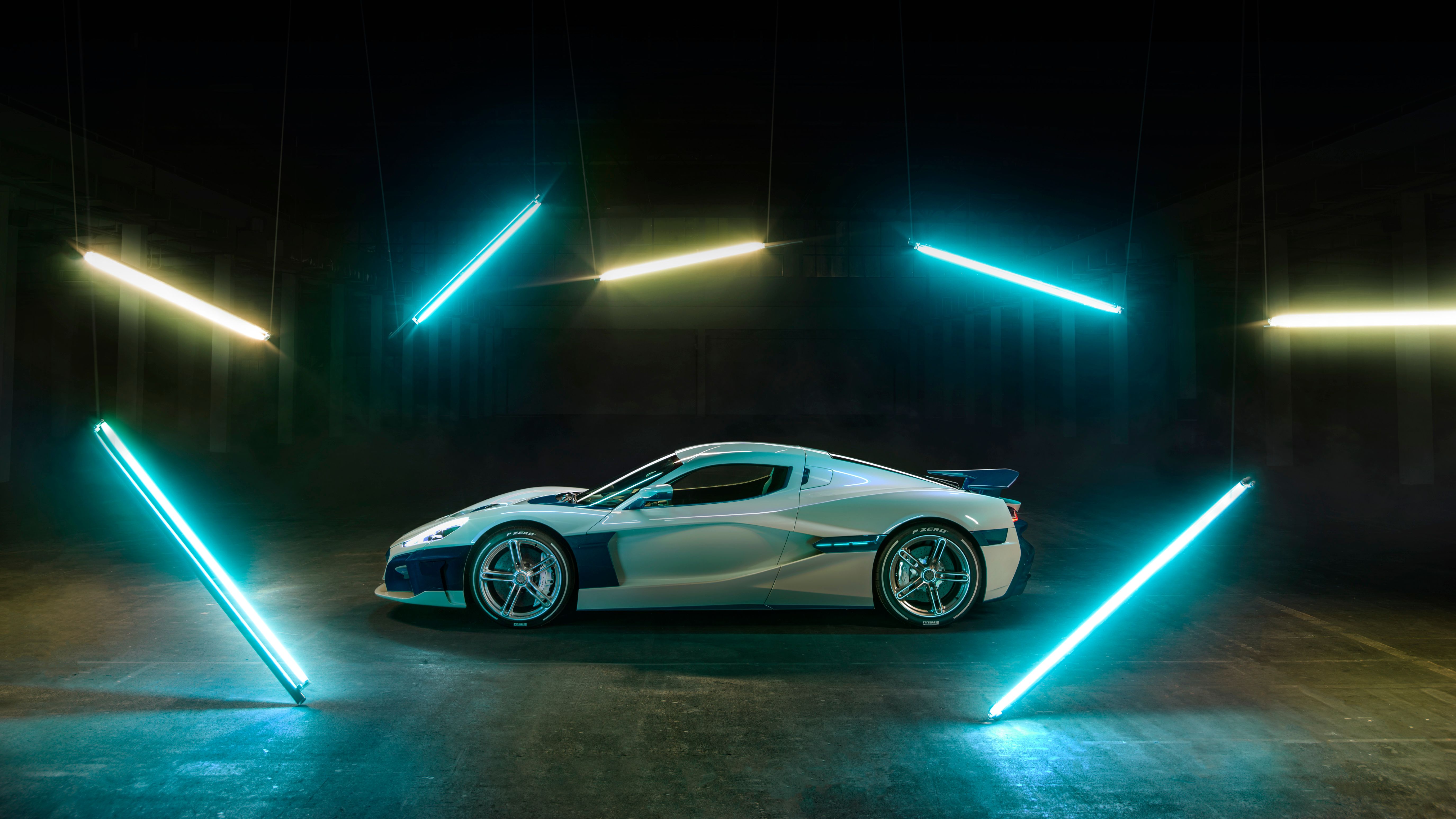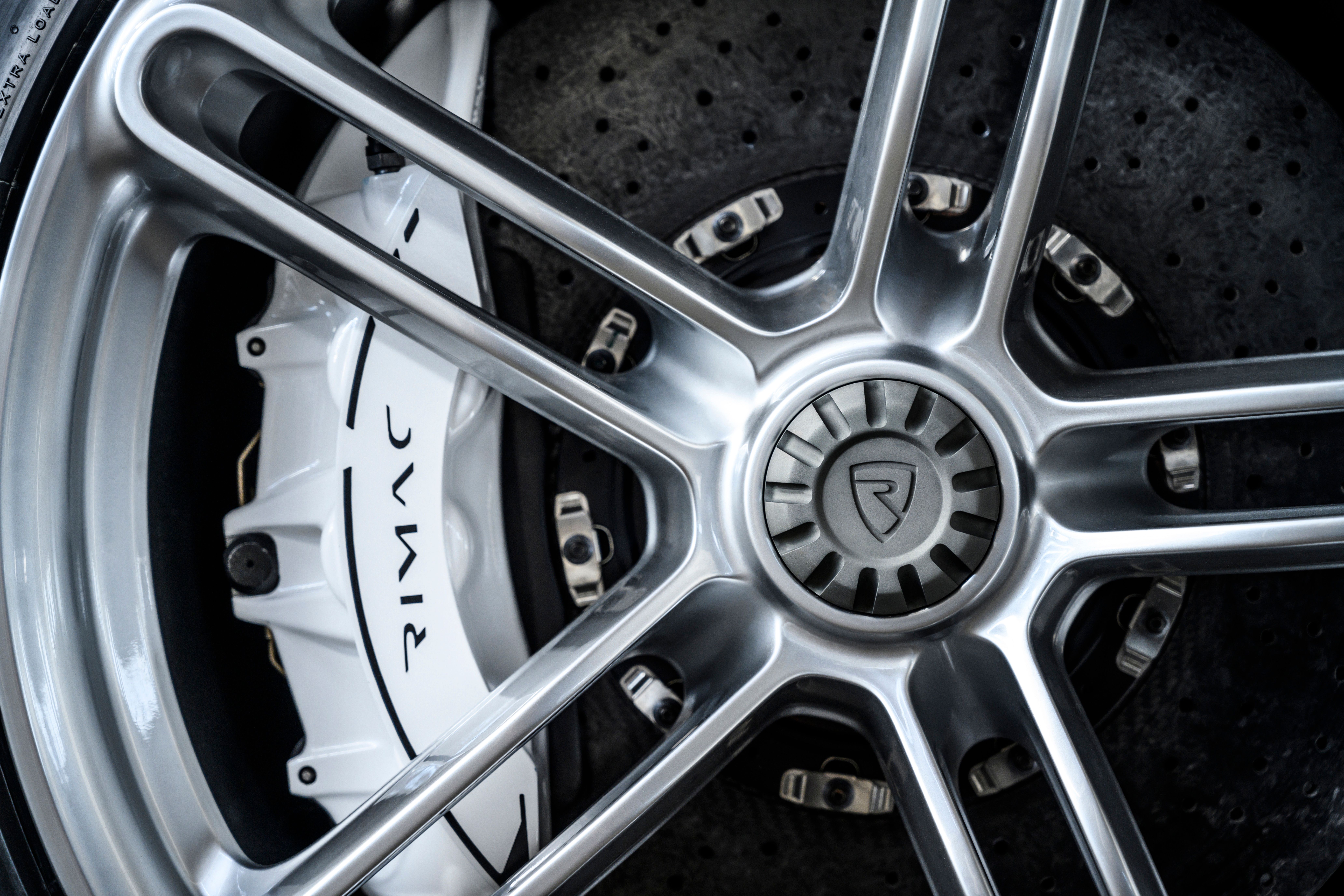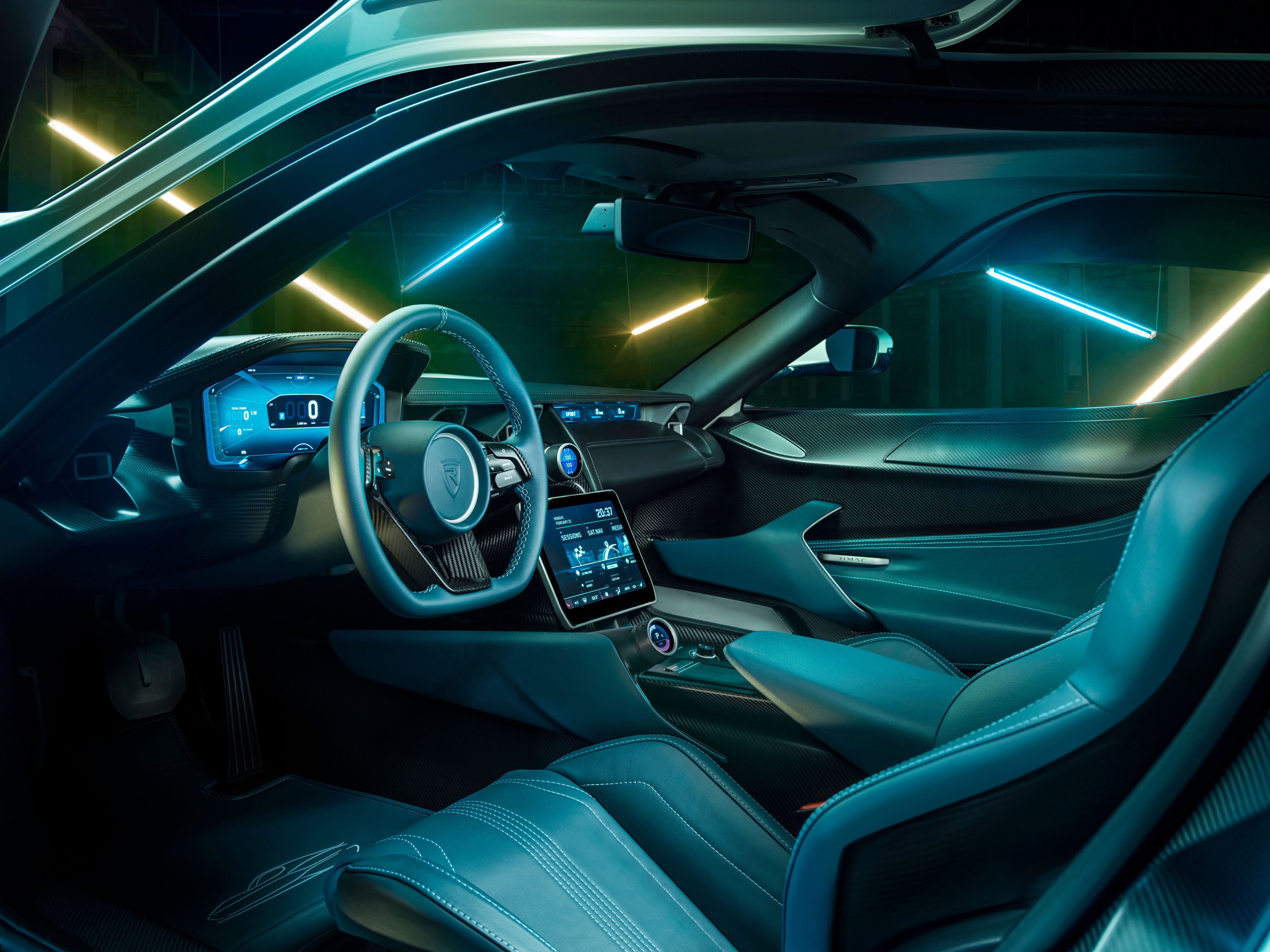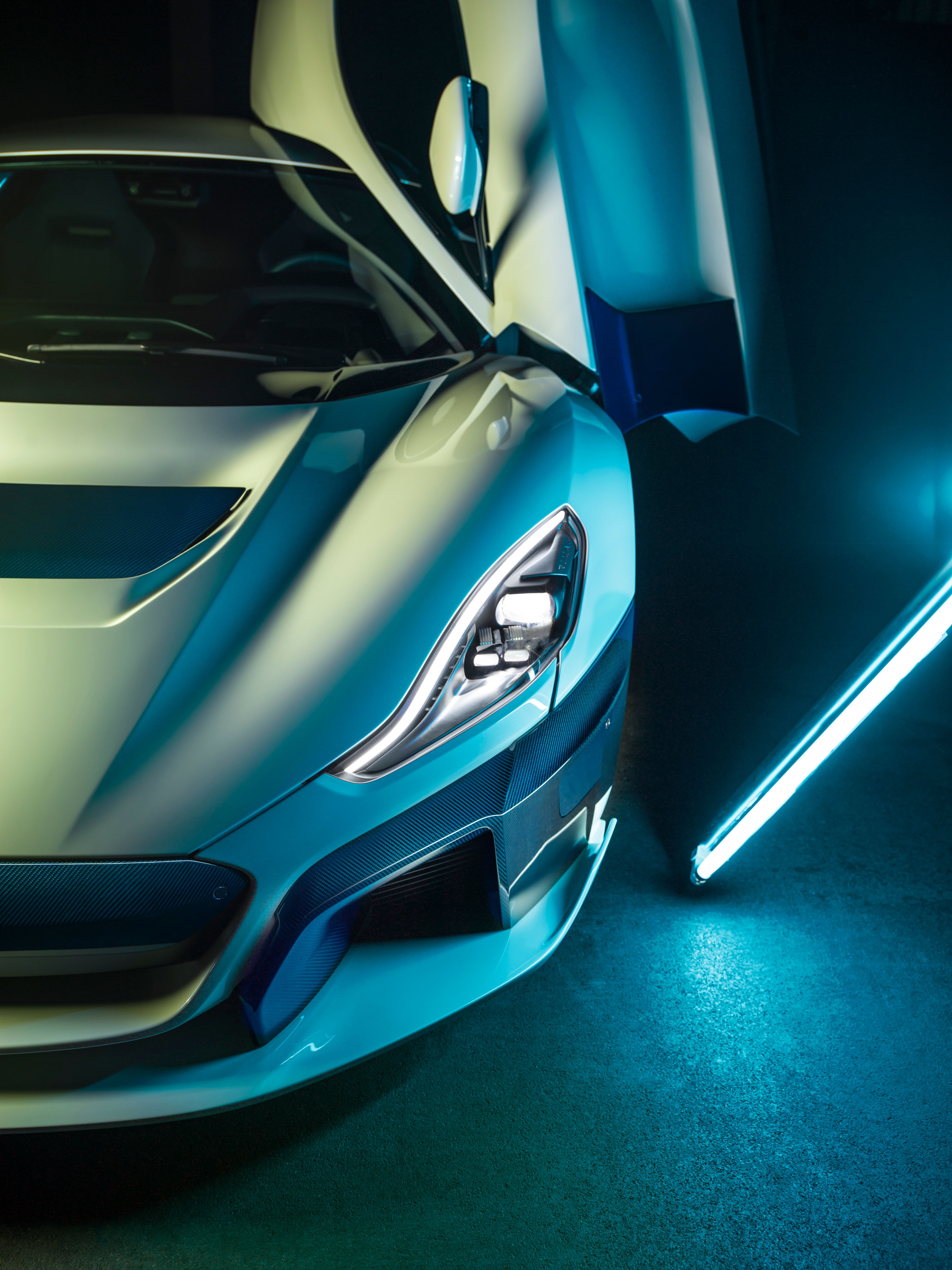Rimac, the crazy Croatian company behind the world's most powerful EV, arrived in Geneva with a different C_Two than the grey one shown last year when the model was officially released. This time, we got to see how well white covers the curves of the 1,914 horsepower hypercar and, to put it shortly, it looks amazing.
Rimac shook the supercar establishment when it launched the C_One (or Concept One) seven years ago at the Frankfurt Auto Show. Now, one year after the world premiere of the ludicrous C_Two, we get more info on the automaker's progress with the car that's not out on the road yet although it's already been sold out despite costing $2.09 million and many expecting owners forking out an extra $600,000 on options.
The C_Two puts out 14 more horsepower than the 2020 Pininfarina Battista
I mean, everything about this car is so extreme you'd be forgiven to think we're talking about the Bugatti Chiron or the Divo. But we aren't because this is an electric car and it's made in Croatia by the same group of guys that transformed a random BMW E30 M3 into an electric tire-shredder.
For the 89th edition of the Swiss show, Rimac painted a C_Two in Galactic White with exposed blue carbon fiber elements. The blue carbon fiber covers the thick bar up front that dominates the central opening as well as the area around the two air vents in the lower bumper and all the way towards the front wheel arches. There's more blue carbon fiber aft of the front wheels, a slat partially covering the carved area of the doors that directs air to the vents on the rear quarter panel. The side skirts are also made out of blue carbon fiber as well as the rear wing and basically the entire rear bumper. with its aggressive multi-fin diffuser. Looking at the Rimac C_Two from the back, I can't help but think of the BMW i8. The U-shaped LED taillights are a dead ringer and so are the protruding elements of the bumper.
The general shape of the car has remained largely unchanged with a long front hood belying the size of the rear deck. It's, in my book, one of the prettiest hypercars money can buy - electric or not - and the simple double five-spoke wheels do help and the dihedral doors are cool in their own right. Inside, matte carbon fiber meets petroleum blue leather and contrast stitching.
The C_Two's battery pack has a 120 kWh capacity (up from the 92 kWh battery pack of the C_One), enough for a range of about 341 miles on the WLTP cycle. By comparison, the Tesla Model 3 has a 310-mile range, the Chevy Bolt EV has a range of just 238 miles and the Nissan Leaf can only go 150 miles on a charge. Granted, the Bolt only has a 60-kWh battery pack and costs infinitely less but it goes to show that an exotic hypercar can also be practical if you keep yourself away from the burgeoning urge of flooring it.
Somehow, that's exactly as much torque as the Pininfarina Battista has on tap, but Italy's most powerful car falls short in terms of power - 14 horsepower short, to be pedantically precise. Pininfarina also claims the Battista can go from 0 to 60 mph in less than 2 seconds, from 0 to 186 mph in 12 seconds, and all the way to a top speed of 250 mph.
The Rimac, meanwhile, which actually shares the battery technology and the drivetrain with Pininfarina's hypercar because Rimac was kind enough to share its technology with the Italian motley crew, needs 1.85 seconds to reach 60 mph and 11.8 seconds for the sprint to 186 mph. This means the C_Two is slightly quicker than the Battista if it comes down to a drag race and it's also quicker if you take'em both to Nardo as the C_Two allegedly tops out at 260 mph. In a way, it's something we could've seen coming as you don't just sell your tech to a rivaling company only to be beaten by the product of that company... or that's the theory, at least. In any case, it's nice to look at the evolution: A Rimac Concept One put out 1,088 horsepower and 2,802 pound-feet of torque and couldn't exceed 190 mph.
Now, a Chiron, one of the best exponents of the dying breed of ICE-powered hypercars doesn't seem that impressive when pitted against the C_Two. In standard trim, the Chiron's 8.0-liter, W-16 engine lets loose 1,480 horsepower at 6,700 rpm and 1,180 pound-feet of torque between 2,000-6,700 rpm. Through a seven-speed DSG transmission, a 0 to 62 mph time of 2.4 seconds is possible and 0 to 186 mph takes just 13.1 seconds, 1.3 seconds slower than the Rimac. Also, with the special key in place, the Chiron reaches 261 mph but Bugatti says it can go faster than that despite its lack of interest of finding out just how fast - lack of proper tires probably being part of the answer why.
There's a catch here: the Chiron is a heavy car. It weighs 4,400 pounds while the Sport version sheds away only 40 pounds. With this being said, the Rimac ain't no Elise either. The Croatian wonder is underpinned by a "full carbon fiber monocoque which is the biggest single carbon-piece in the industry - with the full battery and powertrain integrated within the monocoque. Together with the roof, it weighs under 440 pounds," as per Rimac's statement. In spite of the lack of front or rear subframes, the C_Two weighs 4,300 pounds. For reference, the dry weight of a Koenigsegg Agera RS is just 2,855 lb, in a car that tries to put to the ground 1,160 horsepower (without the 1 MW upgrade) and 944 pound-feet of torque. We know it can do that successfully because, well, it's the fastest production car in the world with a top speed of 278 mph.
So, Rimac isn't quite there yet but Koenigsegg could be with the +1,500 horsepower Jeko that's tipped to reach 300 mph. In the meantime, Rimac is "making sure that all initial targets and global homologation requirements are met and exceeded," so expect to see the car on the road soon.
|
Rimac C_Two Performance And Powertrain |
|
|
Battery Pack Capacity |
120 kWh |
|
Range Per Charge |
341 miles |
|
Electric Motors |
four |
|
Combined Horsepower |
1,914 |
|
Torque |
1,696 pound-feet |
|
0-60 mph |
1.85 seconds |
|
Top Speed |
260 mph |
Further Reading
Read our full review on the 2019 Rimac Concept Two.
Read our full review on the 2017 Rimac Concept One.
Read our full review on the 2018 Bugatti Chiron.
Read our full review on the 2015 Koenigsegg Agera RS.

